Caretta caretta
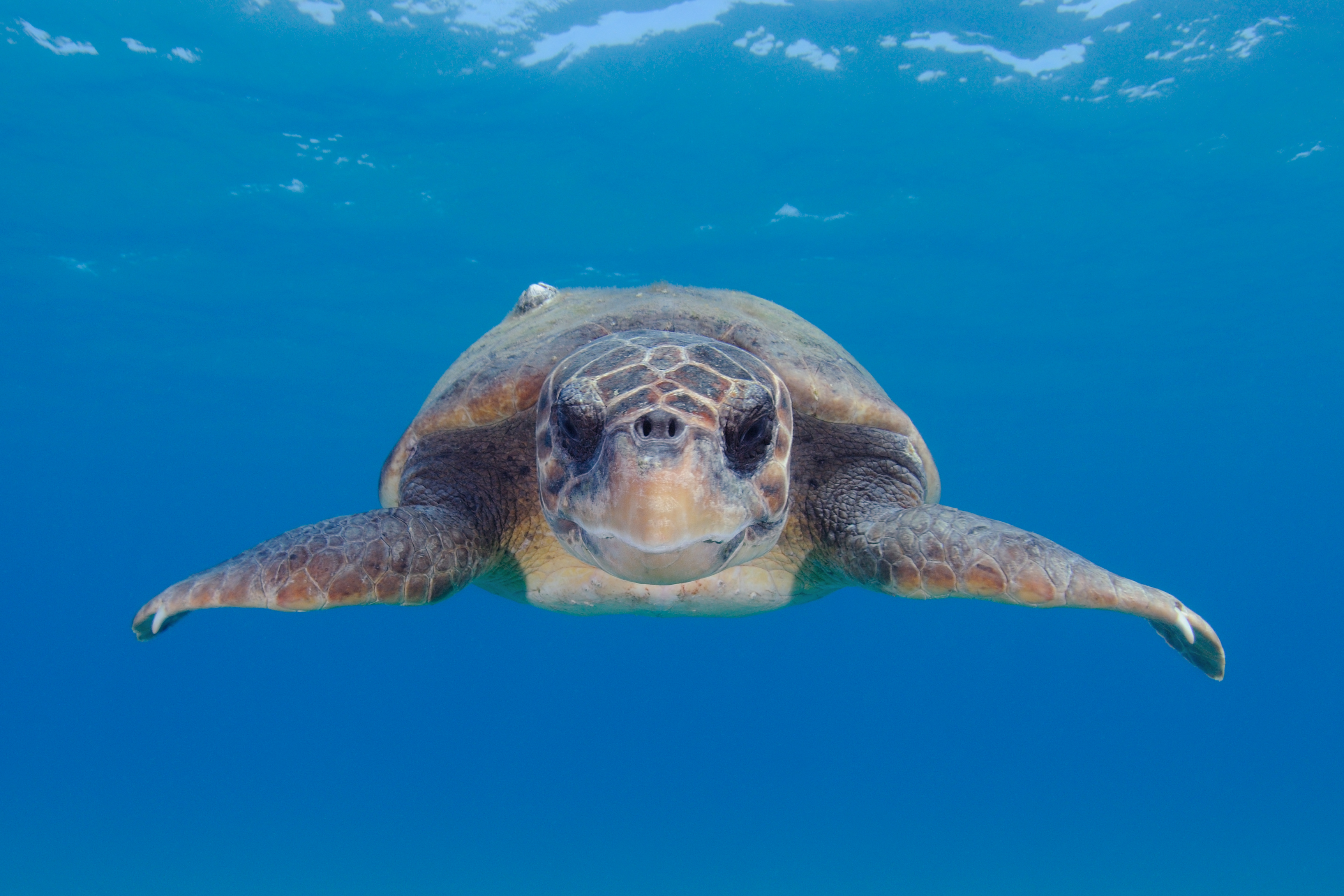

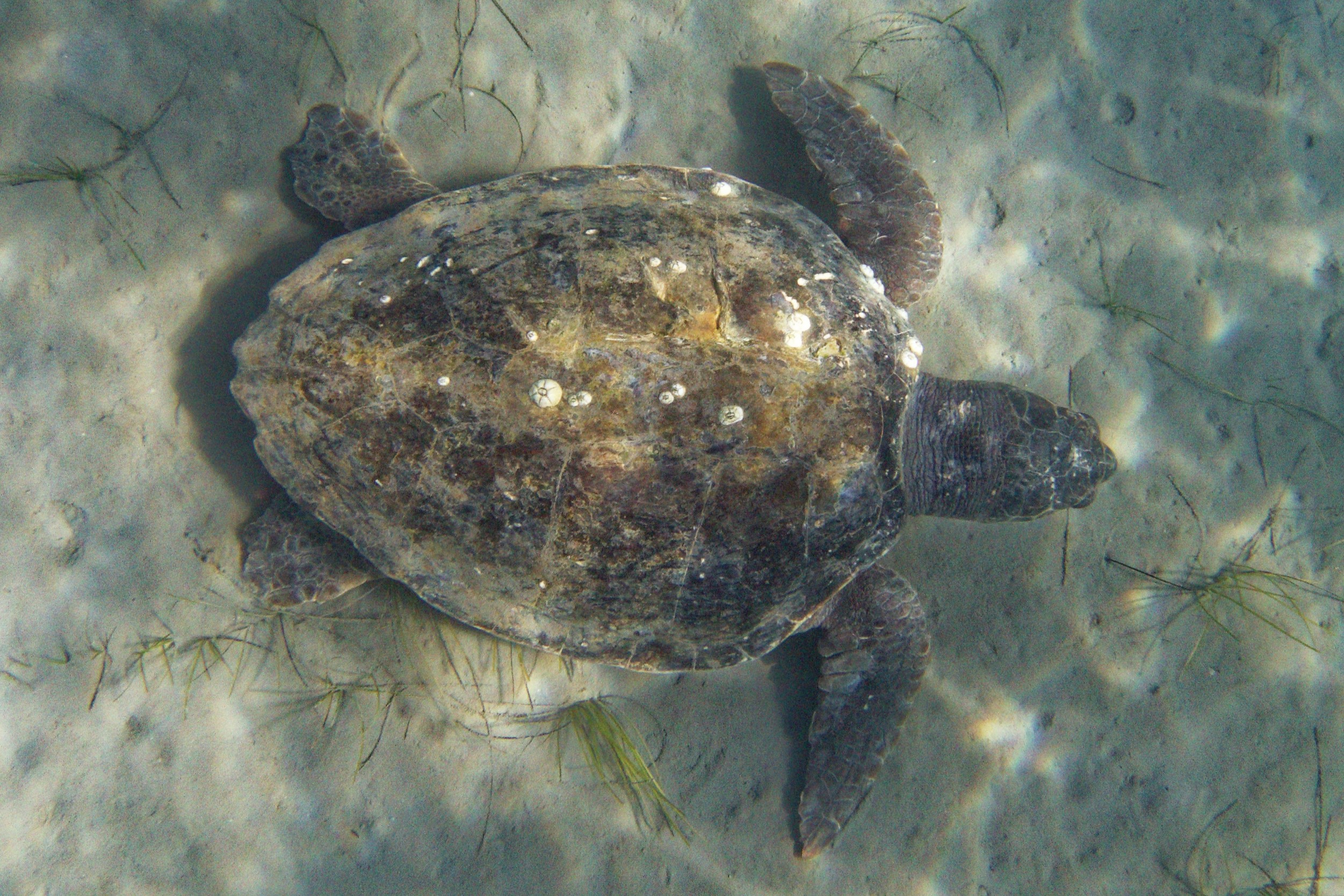

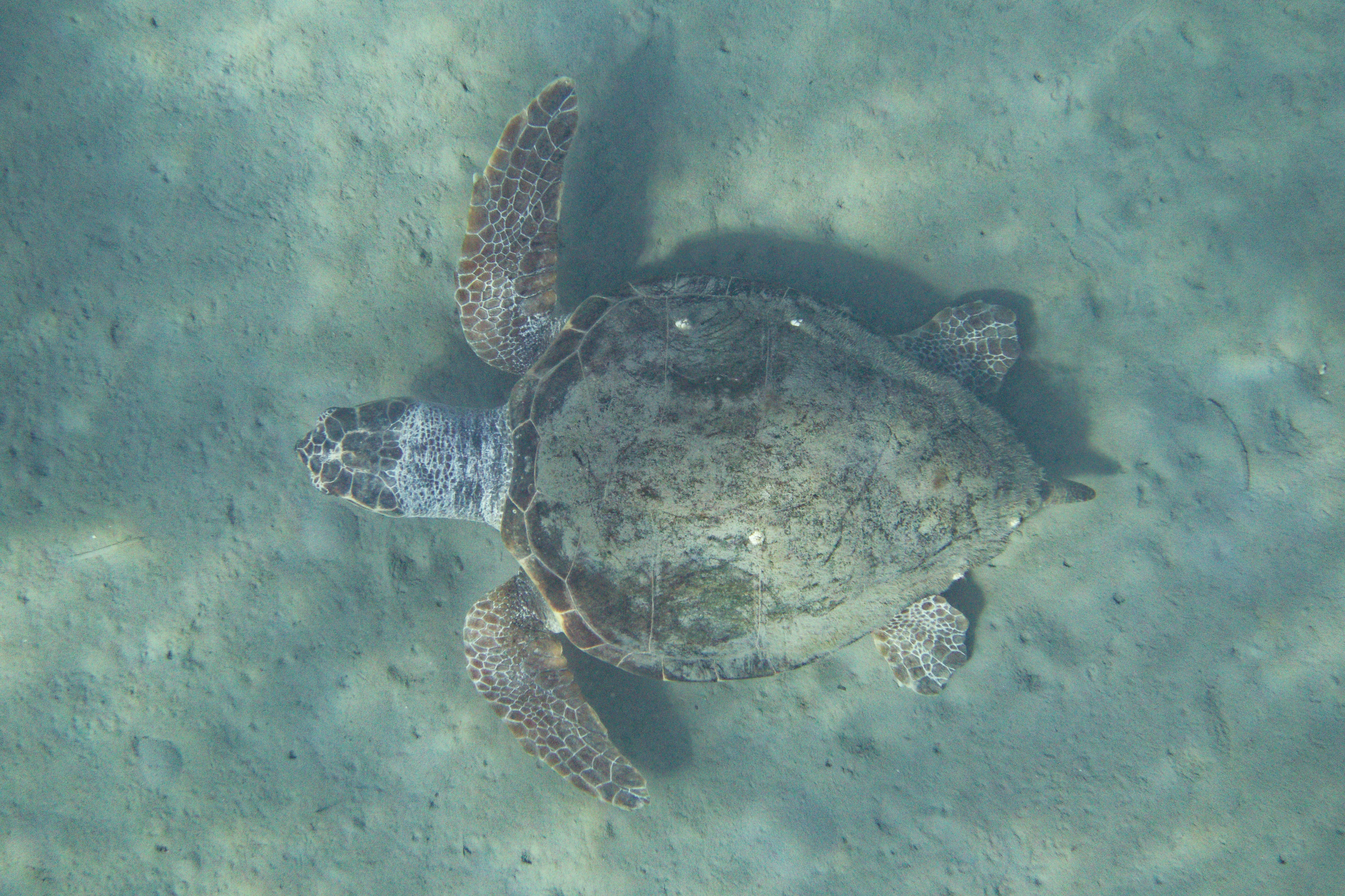

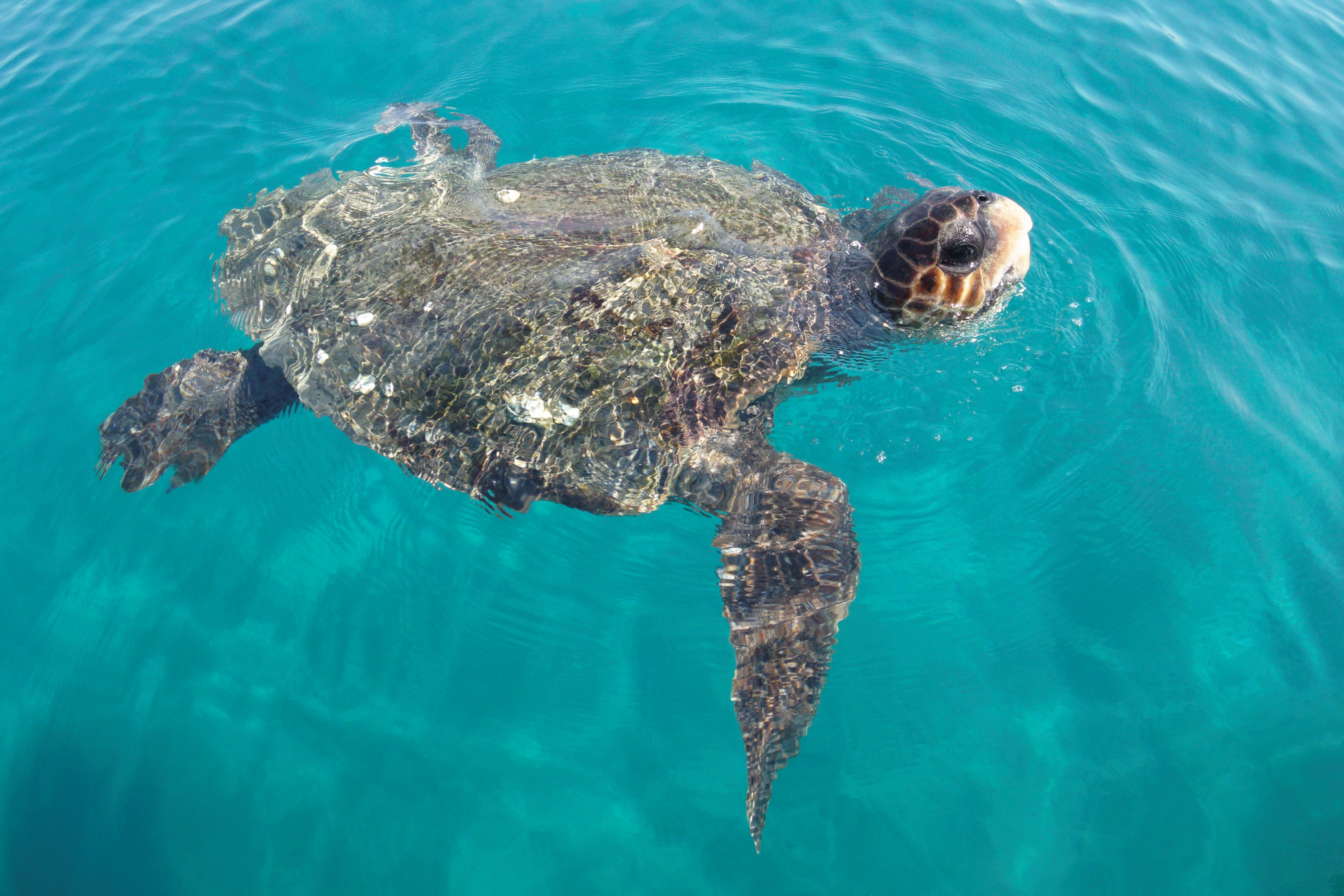
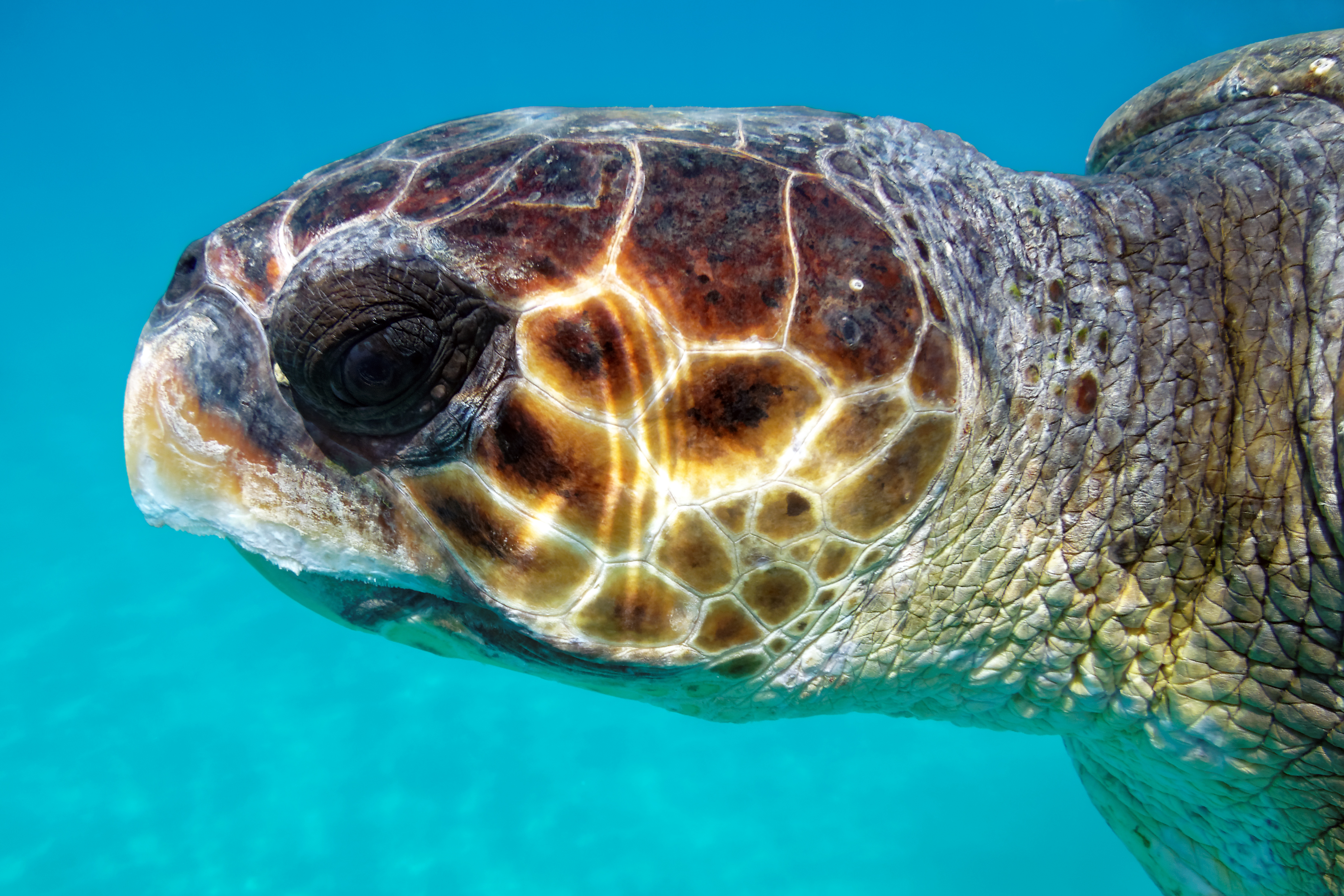
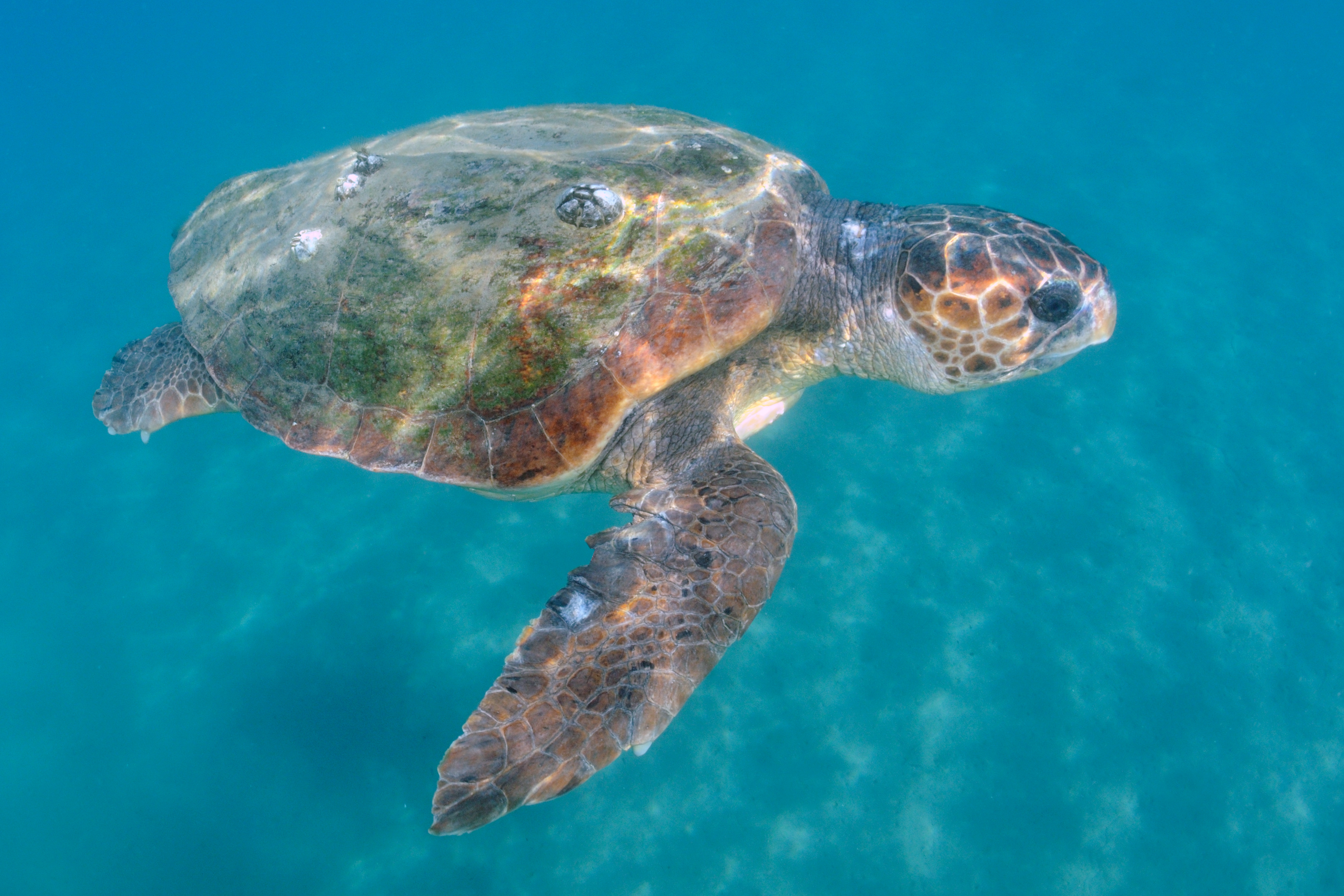
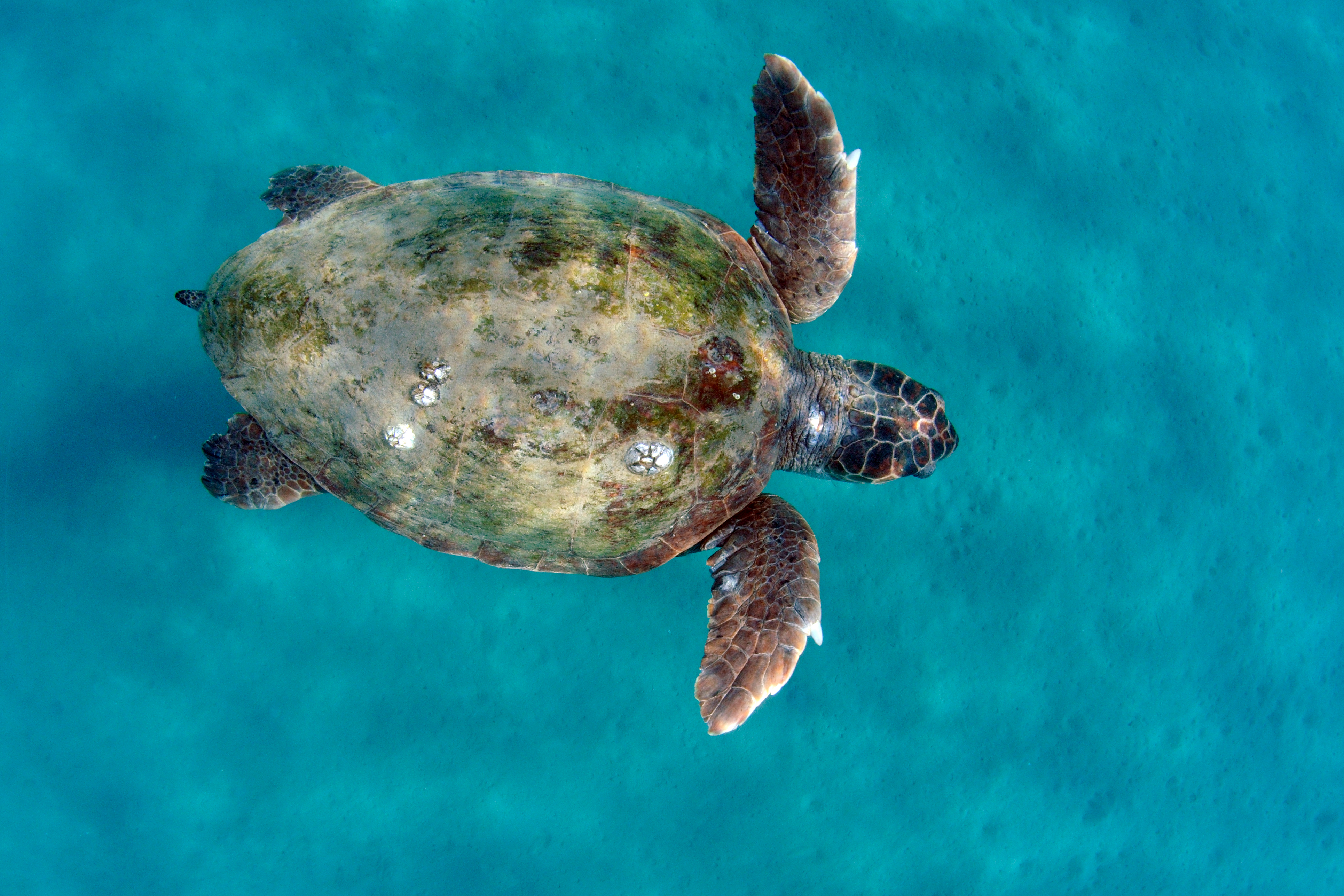

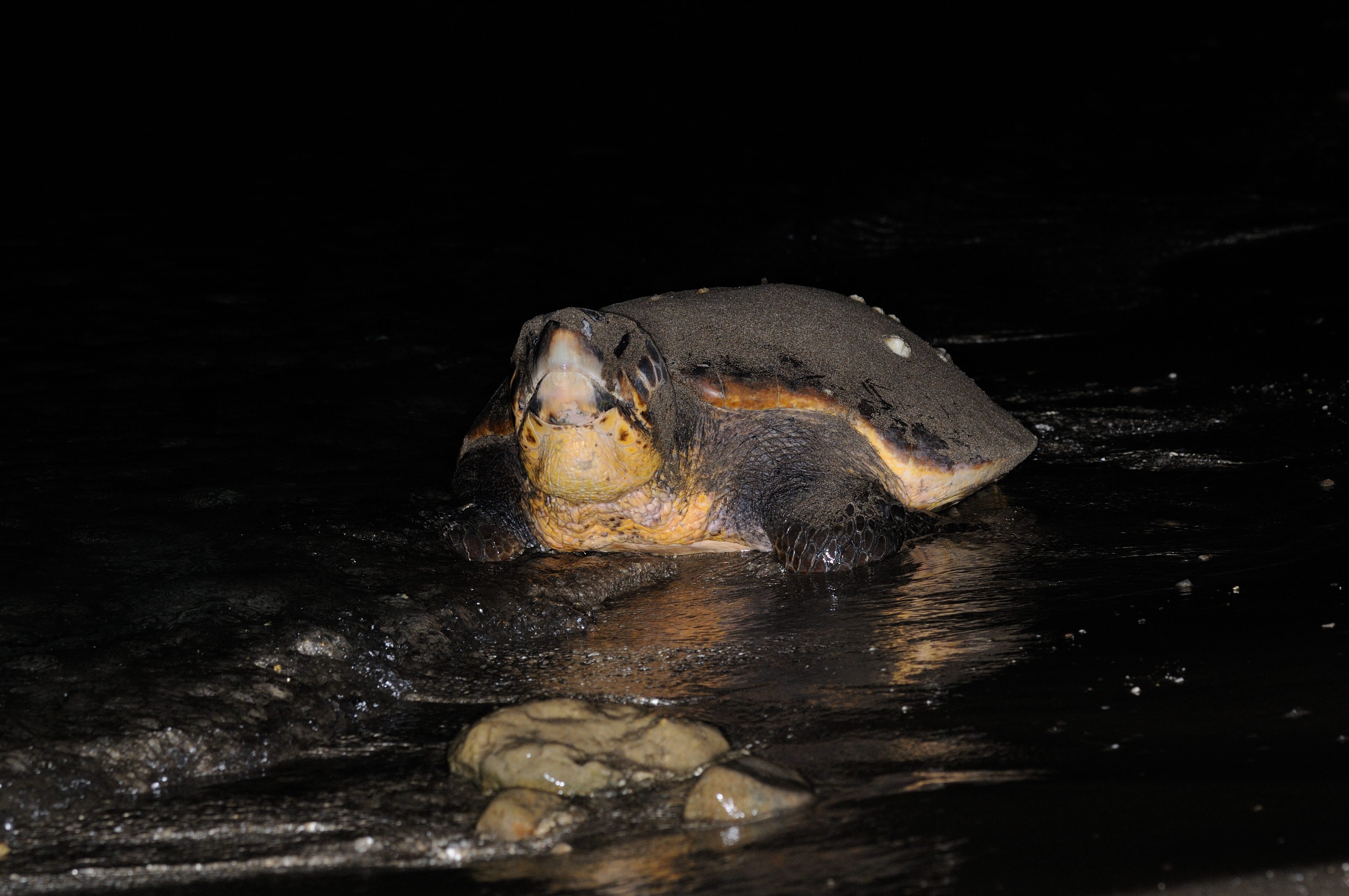
Reptilia → Testudines → Cryptodira → Chelonioidea → Cheloniidae → Caretta → Caretta caretta
Testüggine de mâ
The loggerhead sea turtle's carapace is oval-shaped, with shades ranging from reddish-brown to light brown, often with darker irregular spots. Adult sizes can be considerable: adults usually reach 43–51 in (110–130 cm) in carapace length and a weight ranging from 220–350 lbs (100–160 kg). The head is very large and robust, distinguishing the species, and especially evident in adults due to the presence of powerful flattened jaws adapted for crushing hard prey. Sexual dimorphism is not very pronounced, but males can be recognized by a longer and thicker tail and more curved and developed claws on the forelimbs; males are also generally slightly smaller than females. Hatchlings, measuring 1.6–2 in (4–5 cm) in length and weighing about 0.7 oz (20 g), have a more uniform and markedly darker coloration compared to adults.
The loggerhead sea turtle is the most common marine turtle along the Ligurian coast and is the most frequently observed sea turtle species in the Ligurian Sea. In particular, western Liguria is a significant feeding and transit area, especially in the summer months when surface waters warm up. While reproductive behavior is typical of southern Mediterranean regions, in recent years nesting attempts have been reported on our beaches, likely favored by rising sea temperatures. These events highlight the dynamic distribution of the species in the Mediterranean in response to climate change.
In western Liguria, the species is mainly found in coastal waters and pelagic zones, choosing areas characterized by:
Its proximity to the coast is also favored by the greater availability of food and the presence of natural shelters.
The period in which loggerhead sea turtles are most present in the Ligurian Sea is between May and October, months during which feeding activities near the coast are concentrated. Females lay, during the breeding season (normally further south), an average of 100–120 eggs in deep holes dug at night in beach sands. Incubation lasts about 60 days, with optimal temperatures for embryo development between 75–84 °F (24–29 °C). Documented nesting attempts on Ligurian beaches in recent years are an important sign of the species' adaptability to environmental changes.
Caretta caretta is a predominantly carnivorous species, with a diet composed mainly of:
Sometimes it can supplement its diet with algae and other marine plants. In western Liguria, turtles feeding on jellyfish are commonly observed, naturally contributing to the control of jellyfish populations.
The main threats to the loggerhead sea turtle in Ligurian waters include:
The vulnerability of the species is aggravated by its slow growth rate and sexual maturity reached only after many years.
As with all marine turtles, incubation temperature determines the sex of hatchlings:
In western Liguria, there is a coordinated rescue and monitoring network managed by the Genoa Aquarium, which intervenes promptly in the case of stranded or distressed individuals, contributing to the protection of one of the Mediterranean's most emblematic species.